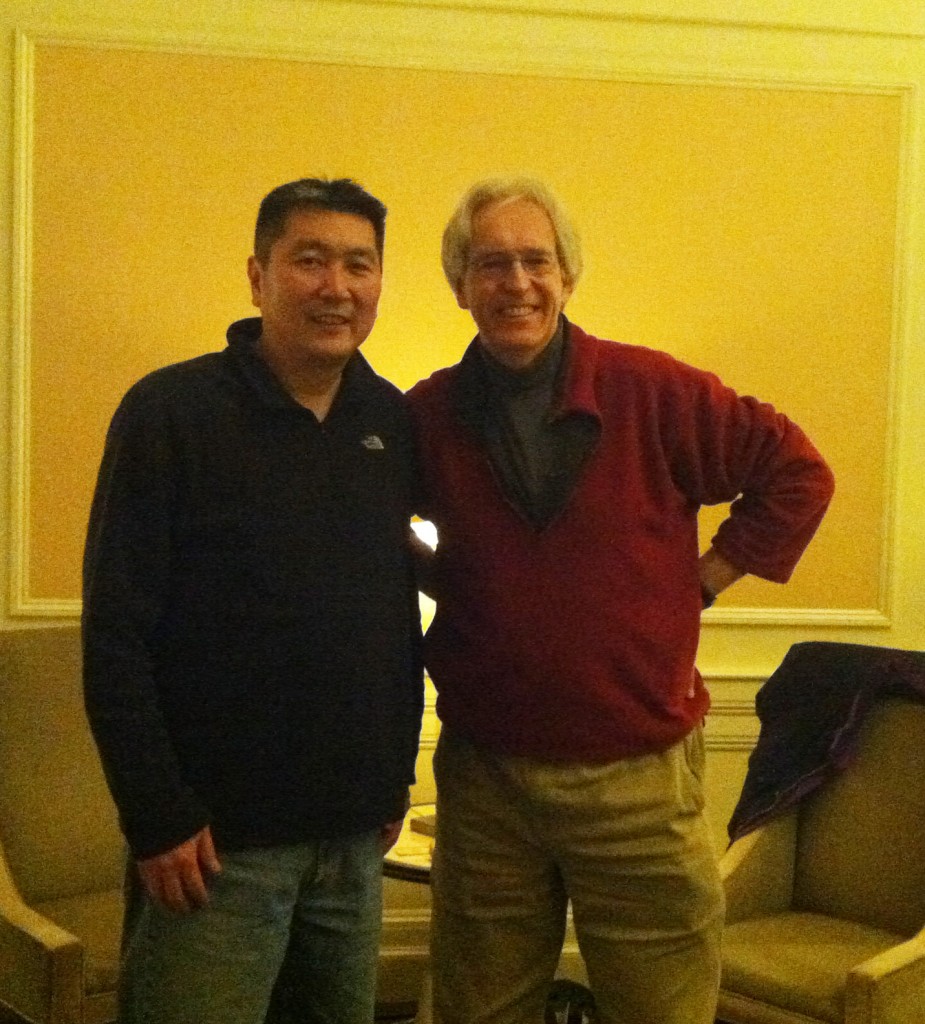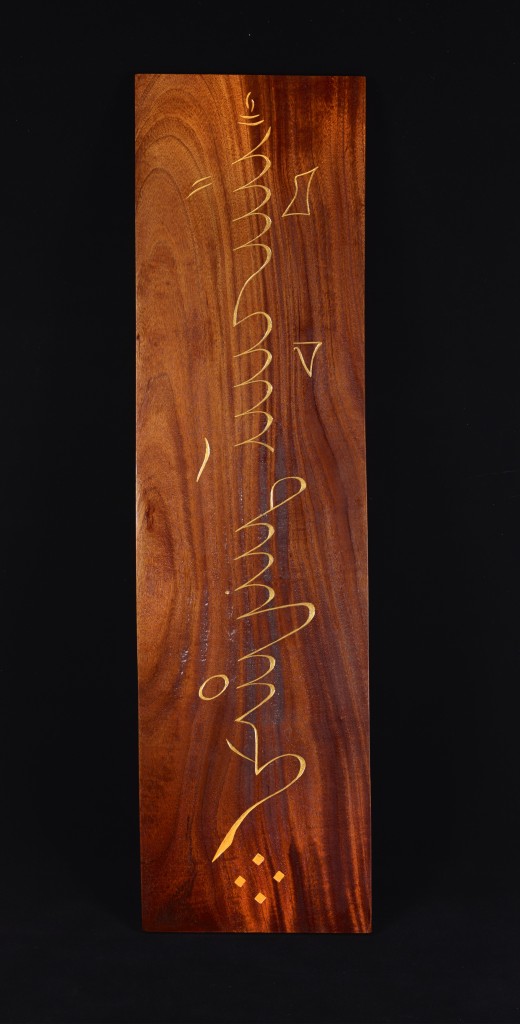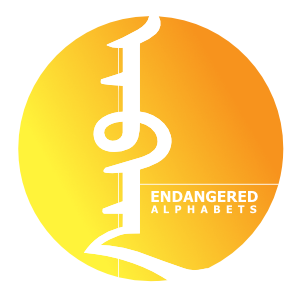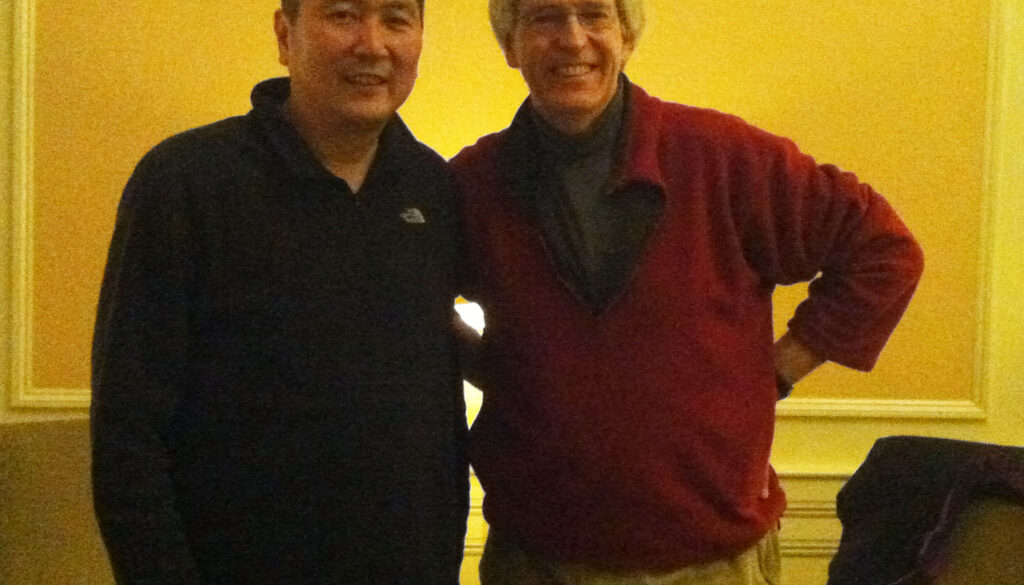A Christmas Present–from Kalmykia

When the Endangered Alphabets team was at the Smithsonian Folklife Festival this summer in Washington D.C., the tent next to ours was occupied by singers and dancers of the Kalmyk Republic, also known as Kalmykia.
The Kalmyks, who originally came west with Genghis Khan and settled in the Caucasus, are a remarkable people in many ways. They are the only Tibetan Buddhists in Europe. They have preserved, to a considerable degree, the yurts and equestrian skills of their Mongol heritage. And some of them–very few–still read and write the script they call todo bitchig, or Classical Mongolian.
Hearing there was an endangered alphabet in the very next tent on the Washington Mall, I went over to say hi, and in due course one of the troupe wrote out the words “Kalmyk Republic” in todo bitchig for me to carve. In due course this came about, and thanks to a gorgeous piece of sapele, it came out very well:

By now, of course, the piece of wood was in Burlington, Vermont, and the Kalmyks were not. So I asked the excellent David Harrison for an address to send it, and he told me about the Tulip Foundation and Naran Badushov. I mailed the large, cardboarded carving to New Jersey, and to my amazement got an email from Naran saying he and his family were going to be spending Christmas week in Burlington, and could we meet?
Of course we met. Naran, whose family was displaced from Kalmykia by the potent combination of Adolf Hitler and Josef Stalin, grew up in Howell, New Jersey. His grandparents instilled in him a pride in his heritage–a heritage that has a fascinating place in U.S. history as the culture that brought Tibetan Buddhism (temples, monks, worship, and all) to this country.
In recent years he has founded the Tulip Foundation to preserve and educate about Kalmyk language, culture and tradition. A dignified, cheerful, passionate man, he spoke in detail about his trips to Kalmykia and to Dzungaria, the traditional homeland of the Mongols in present-day northwest China.
We had a great time together, and I suspect many carvings may come from this beginning. Perhaps the most exciting possibility, though, is that Naran has already started creating in Kalmyk the same kinds of children’s books that the students of Champlain College are already developing for the indigenous children of the Chittagong Hill Tracts. We plan to collaborate with him, bringing yet another endangered alphabet into the fold.
Needless to say, we’d love to hear from anyone who has any additional information on any of these subjects, and Kalmyks the world over may want to contact Naran through the comments section of this website or through the Tulip Foundation.
Season’s greetings to you all!
Tim

